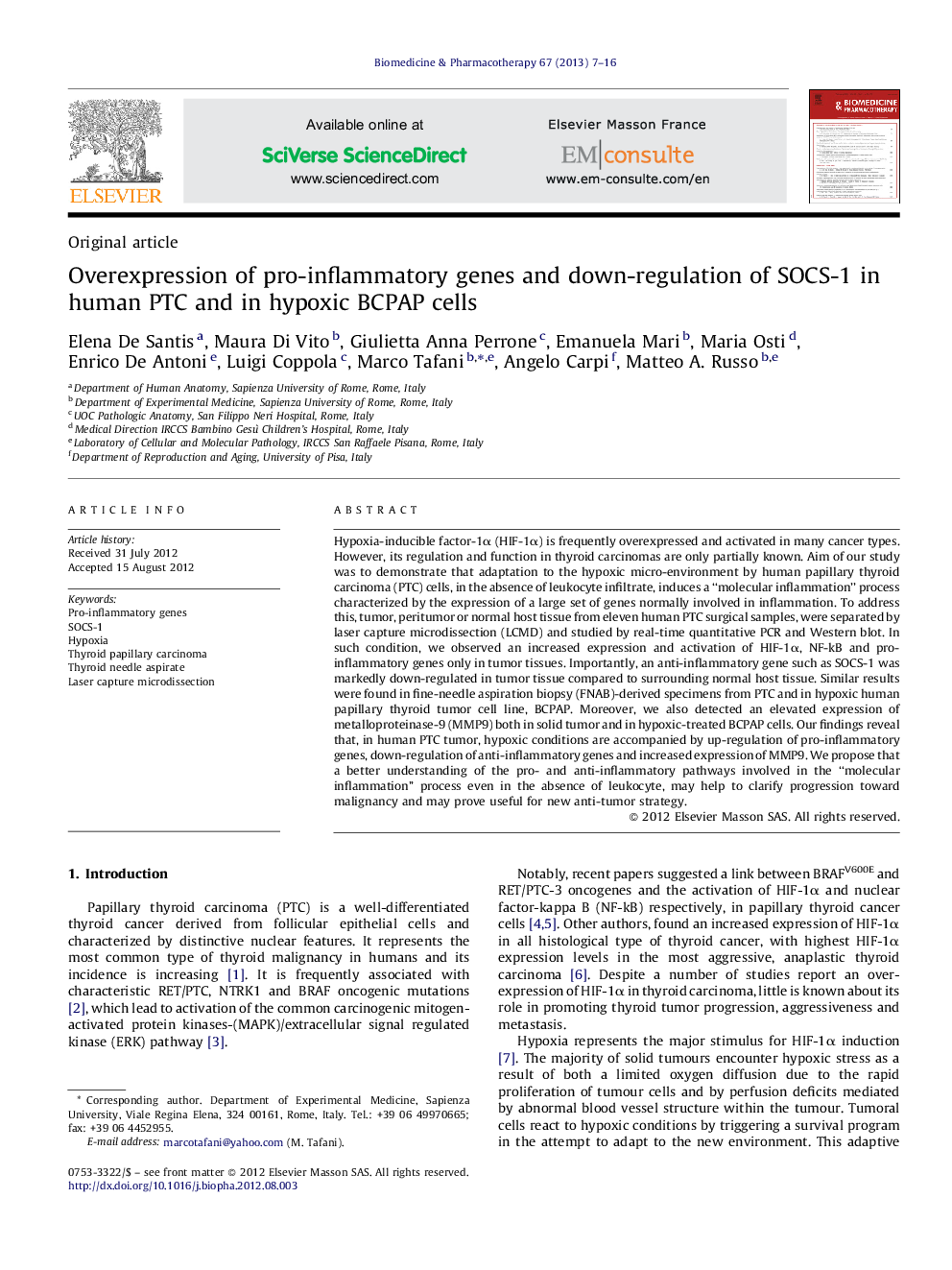| Article ID | Journal | Published Year | Pages | File Type |
|---|---|---|---|---|
| 2525191 | Biomedicine & Pharmacotherapy | 2013 | 10 Pages |
Hypoxia-inducible factor-1α (HIF-1α) is frequently overexpressed and activated in many cancer types. However, its regulation and function in thyroid carcinomas are only partially known. Aim of our study was to demonstrate that adaptation to the hypoxic micro-environment by human papillary thyroid carcinoma (PTC) cells, in the absence of leukocyte infiltrate, induces a “molecular inflammation” process characterized by the expression of a large set of genes normally involved in inflammation. To address this, tumor, peritumor or normal host tissue from eleven human PTC surgical samples, were separated by laser capture microdissection (LCMD) and studied by real-time quantitative PCR and Western blot. In such condition, we observed an increased expression and activation of HIF-1α, NF-kB and pro-inflammatory genes only in tumor tissues. Importantly, an anti-inflammatory gene such as SOCS-1 was markedly down-regulated in tumor tissue compared to surrounding normal host tissue. Similar results were found in fine-needle aspiration biopsy (FNAB)-derived specimens from PTC and in hypoxic human papillary thyroid tumor cell line, BCPAP. Moreover, we also detected an elevated expression of metalloproteinase-9 (MMP9) both in solid tumor and in hypoxic-treated BCPAP cells. Our findings reveal that, in human PTC tumor, hypoxic conditions are accompanied by up-regulation of pro-inflammatory genes, down-regulation of anti-inflammatory genes and increased expression of MMP9. We propose that a better understanding of the pro- and anti-inflammatory pathways involved in the “molecular inflammation” process even in the absence of leukocyte, may help to clarify progression toward malignancy and may prove useful for new anti-tumor strategy.
